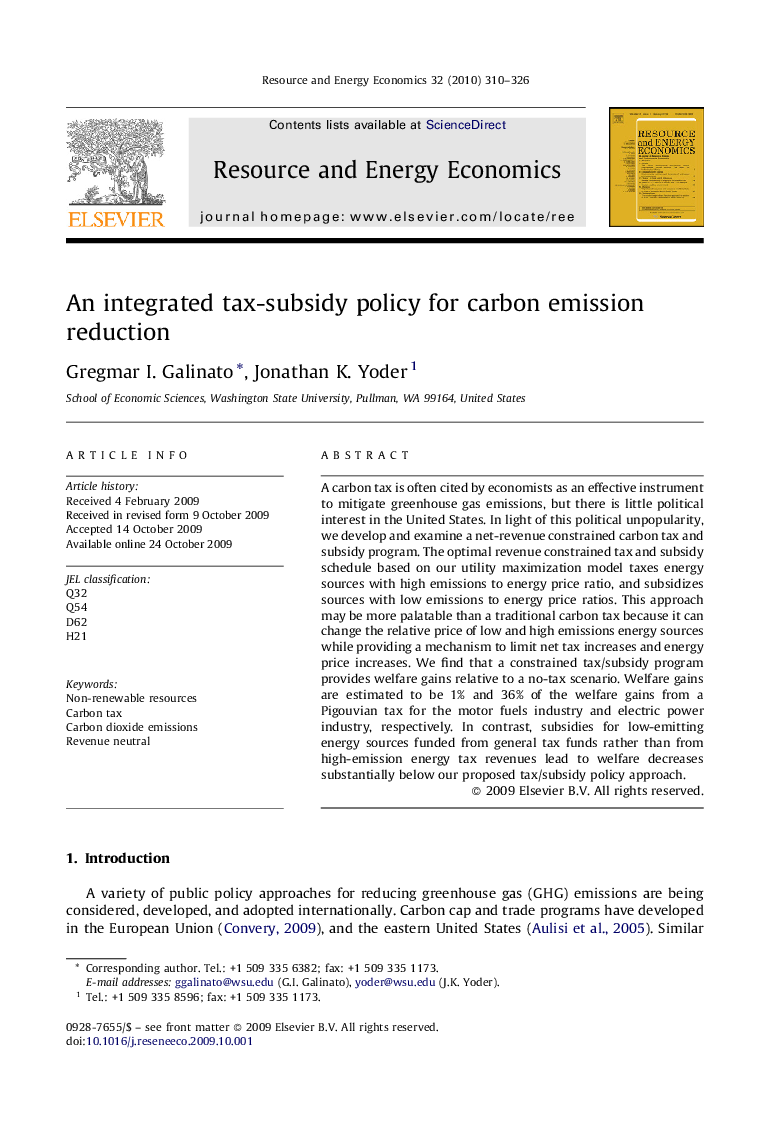| Article ID | Journal | Published Year | Pages | File Type |
|---|---|---|---|---|
| 985803 | Resource and Energy Economics | 2010 | 17 Pages |
A carbon tax is often cited by economists as an effective instrument to mitigate greenhouse gas emissions, but there is little political interest in the United States. In light of this political unpopularity, we develop and examine a net-revenue constrained carbon tax and subsidy program. The optimal revenue constrained tax and subsidy schedule based on our utility maximization model taxes energy sources with high emissions to energy price ratio, and subsidizes sources with low emissions to energy price ratios. This approach may be more palatable than a traditional carbon tax because it can change the relative price of low and high emissions energy sources while providing a mechanism to limit net tax increases and energy price increases. We find that a constrained tax/subsidy program provides welfare gains relative to a no-tax scenario. Welfare gains are estimated to be 1% and 36% of the welfare gains from a Pigouvian tax for the motor fuels industry and electric power industry, respectively. In contrast, subsidies for low-emitting energy sources funded from general tax funds rather than from high-emission energy tax revenues lead to welfare decreases substantially below our proposed tax/subsidy policy approach.
